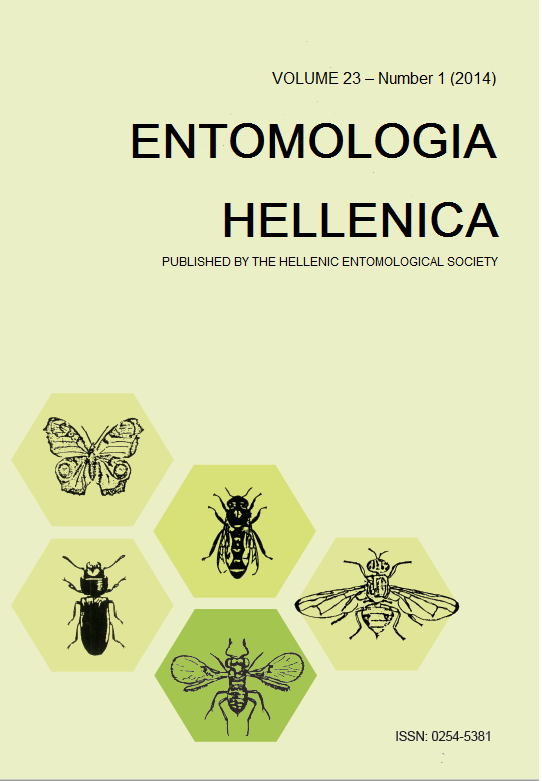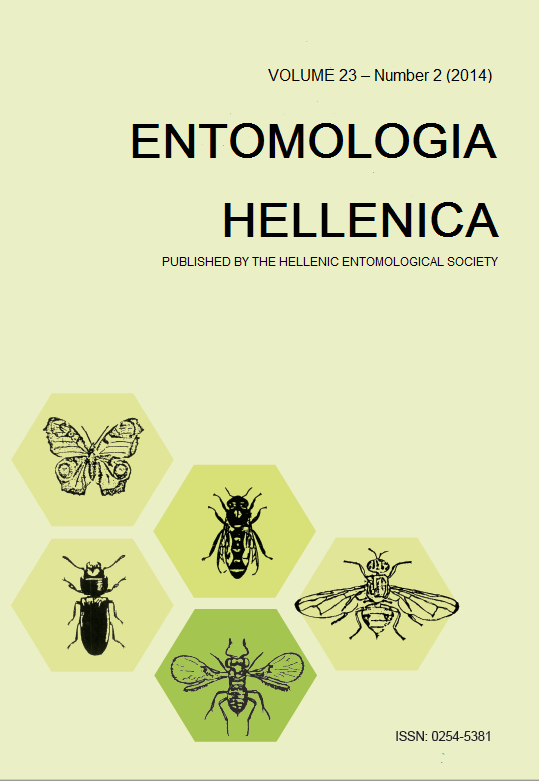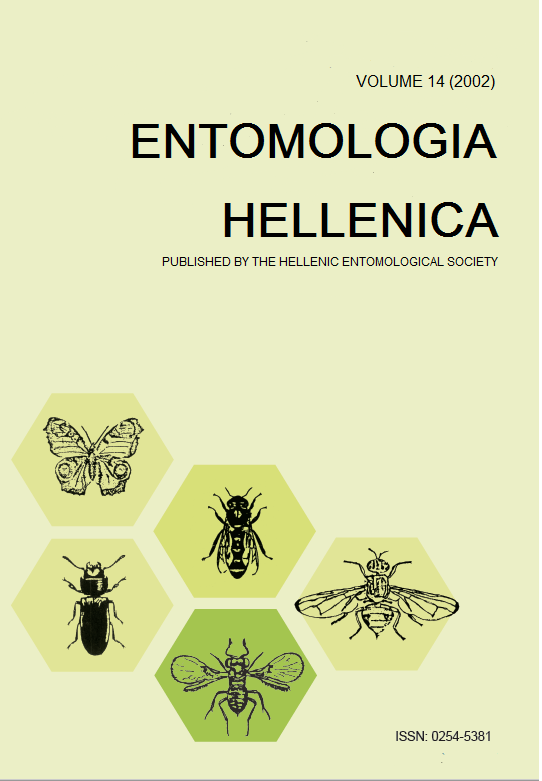Δομή βιοκοινοτήτων εδάφους και βιοποικιλότητα σε ελαιώνες τριών νησιών της Αν. Μεσογείου
Περίληψη
Σε αυτήν την εργασία μελετήθηκε η πανίδα του εδάφους με παγίδες παρεμβολής (pitffal traps) και συγκρίνονται τα αποτελέσματα από έξι ελαιώνες σε τρία χωριά της Μεσαράς (Πέρι, Πετροκεφάλι, Κουσές), σε άλλους τρεις ελαιώνες της Κρήτης σε Βασιλιές, Σκαλάνι, και Αγρόκτημα ΤΕΙ (όλοι πέριξ της πόλης του Ηρακλείου) και σε δύο ελαιώνες άλλων νησιών, ενός από την Κω και ενός από την Κύπρο. Συνολικά συνελήφθησαν 35 taxa, από τα οποία τα 21 ανήκουν στα έντομα και τα 6 στα αραχνίδια. Στις βιοκοινότητες κυριαρχεί το ζεύγος των ομάδων Κολεόπτερα και Μυρμήγκια (οικ. Formicidae) στους οκτώ από τους ένδεκα συνολικά ελαιώνες. Στους 10 από τους ένδεκα οι δύο αυτές ομάδες καταλαμβάνουν από 61-62% έως 91- 92%. Άλλες σημαντικές ομάδες αποτελούν τα Δίπτερα, τα Υμενόπτερα, τα Κολλέμβολα, τα Φαλάγγια, οι Αράχνες, τα Ακάρεα και τα Ισόποδα. Αν προσθέσουμε τα ποσοστά αυτών των επτά ομάδων στις δύο πρώτες, συνολικά οι εννέα ομάδες αρθροπόδων καλύπτουν από 88 έως 99%. Οι τιμές βιοποικιλότητας κυμαίνονται (σύμφωνα με το δείκτη Shannon) από λίγο άνω της μονάδας (1,02) έως άνω του 2 (2,24). Χαμηλότερες βιοποικιλότητες εμφανίζουν οι δύο ελαιώνες εκτός Κρήτης, μαζί με τον ελαιώνα του Σκαλανίου. Ομαδοποιήσαμε τους ελαιώνες της Μεσαράς ως μία ομάδα, τους ελαιώνες της υπόλοιπης Κρήτης ως δεύτερη και τους ελαιώνες των άλλων νησιών ως τρίτη. Σύμφωνα με την ANOVA οι διαφορές είναι στατιστικά σημαντικές σε επίπεδο 95% και οι ελαιώνες της Μεσαράς εμφανίζουν στατιστικά σημαντικά μεγαλύτερη βιοποικιλότητα από τους ελαιώνες των άλλων νησιών (Κύπρου, Κω), σύμφωνα και με τους τέσσερις post hoc δείκτες που χρησιμοποιήσαμε (Tukey, Duncan, Scheffe, LSD). Σε ότι αφορά ομοιότητες βιοκοινοτήτων, ορισμένοι από τους ελαιώνες της Μεσαράς εμφανίζουν μεταξύ τους τις μεγαλύτερες (σύμφωνα με το δείκτη Jaccard). Υψηλή ομοιότητα εμφανίζει και ο ελαιώνας του Σκαλανίου με αυτόν της Κύπρου, αμφότεροι συμβατικοί. Μεταξύ των 15 υψηλοτέρων τιμών ομοιότητας (0,9 και άνω), οι 14 αφορούν ζεύγη ελαιώνων της Μεσαράς. Οι τέσσερις στις πέντε χαμηλότερες τιμές (0,48-0,56) αφορούν ζεύγη ελαιώνων από διαφορετικά νησιά. Υπάρχουν ζωικές ομάδες που εμφανίζονται σε στατιστικά σημαντικά μεγαλύτερα ποσοστά σε ελαιώνες ορισμένων περιοχών, ωστόσο χρειάζεται περαιτέρω μελέτη για την επιβεβαίωση αυτής της ένδειξης. Μπορούμε να συμπεράνουμε ότι οι ελαιώνες σε ότι αφορά τόσο στη δομή, όσο και στη βιοποικιλότητά τους, είναι από τα αγροοικοσυστήματα τα λιγότερο επηρεαζόμενα από τις καλλιεργητικές διεργασίες, όπως προκύπτει από την σχεδόν πλήρη ταύτιση των κύριων ομάδων και από τις τιμές του δείκτη ομοιότητας μεταξύ συμβατικών και βιολογικών καλλιεργειών.
Λεπτομέρειες άρθρου
- Πώς να δημιουργήσετε Αναφορές
-
Liantraki, Z., Tzokas, I., & Kollaros, D. (2014). Δομή βιοκοινοτήτων εδάφους και βιοποικιλότητα σε ελαιώνες τριών νησιών της Αν. Μεσογείου. ENTOMOLOGIA HELLENICA, 23(1), 1–9. https://doi.org/10.12681/eh.11529
- Τεύχος
- Τόμ. 23 Αρ. 1 (2014)
- Ενότητα
- Articles

Αυτή η εργασία είναι αδειοδοτημένη υπό το CC Αναφορά Δημιουργού – Μη Εμπορική Χρήση – Παρόμοια Διανομή 4.0.
Authors who publish with this journal agree to the following terms:
Authors retain copyright and grant the journal right of first publication with the work simultaneously licensed under a Creative Commons 4.0 license.
Authors are able to enter into separate, additional contractual arrangements for the non-exclusive distribution of the journal's published version of the work (e.g. post it to an institutional repository or publish it in a book), with an acknowledgement of its initial publication in this journal. Authors are permitted and encouraged to post their work online (preferably in institutional repositories or on their website) prior to and during the submission process, as it can lead to productive exchanges, as well as earlier and greater citation of published work.





